
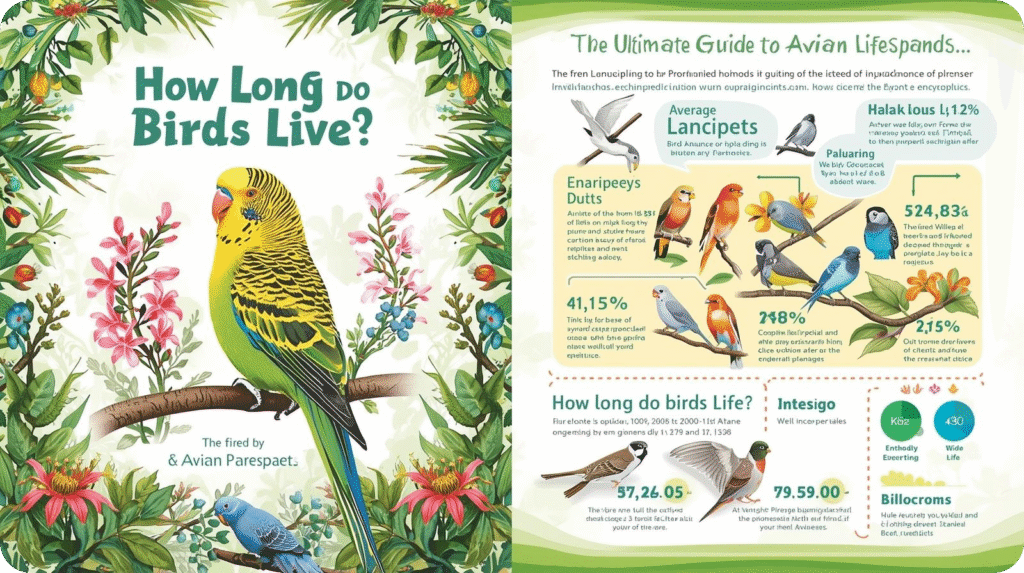
Introduction: Understanding and Caring for Your Female Parakeet — How Long Do a Bird Live
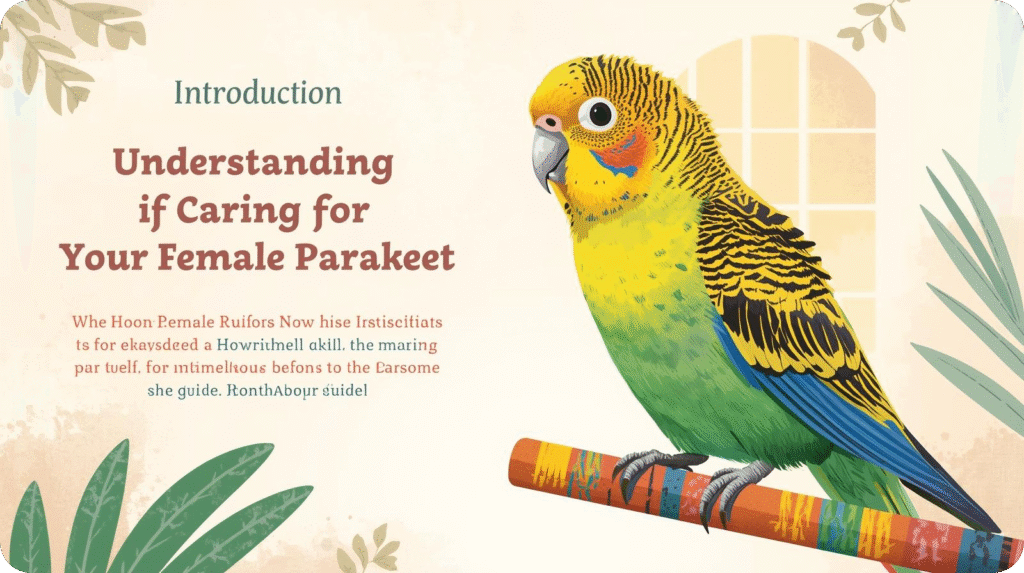
Female parakeets, with their bold personalities and soft charm, bring both beauty and intelligence into any home. When learning how long do a bird live, it’s important to understand that proper care and attention greatly influence your pet’s lifespan. Whether she’s a curious companion or a quiet observer, knowing how to identify, understand, and care for your female budgie is the key to forming a lasting bond. From recognizing her unique cere color to appreciating her independent nature, this guide will help you uncover everything that makes female parakeets truly special—and help her live a long, healthy life.
Few questions in the natural world are as simple to ask and as complex to answer as “How long do a birds live?” The lifespan of a bird is a story written by its species, its environment, and the challenges it faces. From the small bird at your feeder to the beautiful parrot that becomes a family treasure, birds can live a long time.
Knowing how long do a birds live is important. This information helps anyone who loves backyard birds, thinks about getting a pet bird, or wants to help local wildlife.
This guide looks at what affects a bird’s journey. It explores the significant differences between life in the wild and life in captivity. It also gives the knowledge needed for the long-term care these amazing creatures often need.
The Delicate Balance of Life in the Wild
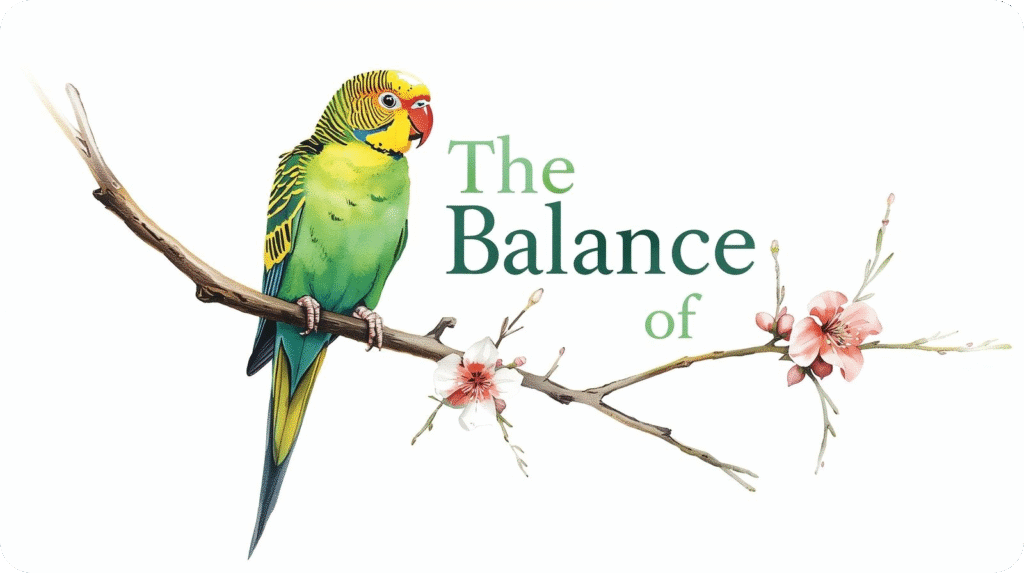
For wild birds, life is a constant battle for survival. The average lifespan of most wild songbirds is deceptively short, often a mere fraction of their potential biological age. The first year of life is the most dangerous. Many hatchlings do not survive to adulthood because of many threats.
The High Stakes of the First Year and Common Threats
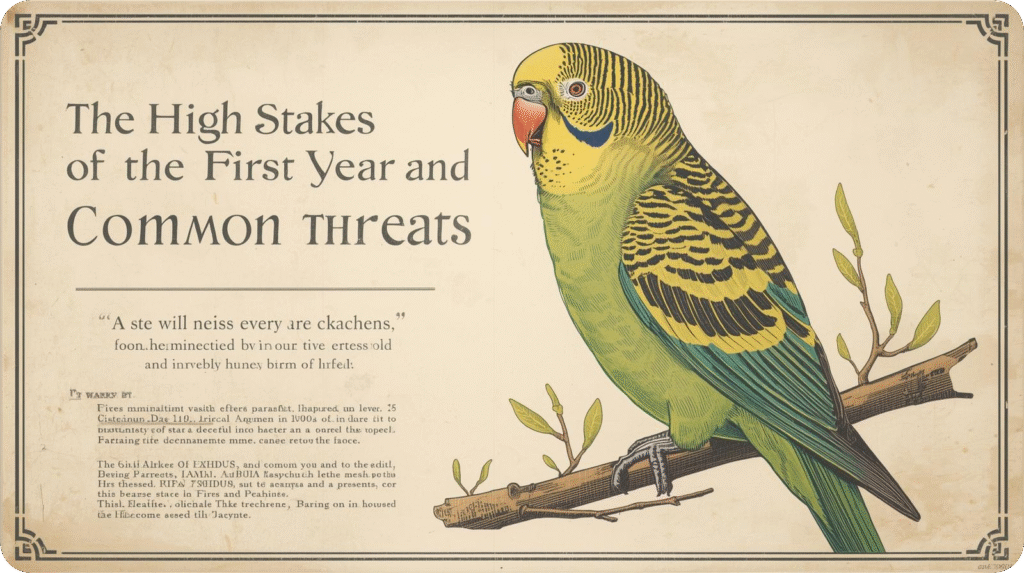
A young bird must navigate a world full of dangers. The threats they face are relentless and varied:
- Predation: Domestic cats, hawks, snakes, and other natural predators are a constant danger. Outdoor cats alone are one of the top human-caused threats to birds, killing billions each year in the U.S. .
- Starvation: Finding a reliable food source, especially during winter months or droughts, is a daily challenge.
- Disease: Avian illnesses and parasites can spread rapidly through populations.
- Accidents: Collisions with windows, vehicles, and entanglement in human-made materials claim countless lives. Building glass collisions pose a serious threat to birds. An estimated 599 million birds die each year in the U.S. due to these collisions.
- Extreme Weather: Severe storms, heatwaves, and cold snaps can be fatal.
However, a bird that survives its first year often sees its odds improve dramatically. The high death rate of young birds explains the big difference between their average lifespan and the oldest age recorded for many bird species. That seemingly common house sparrow at your feeder has, against all odds, mastered its environment, at least for a little while.
The Challenge of Aging Wild Birds
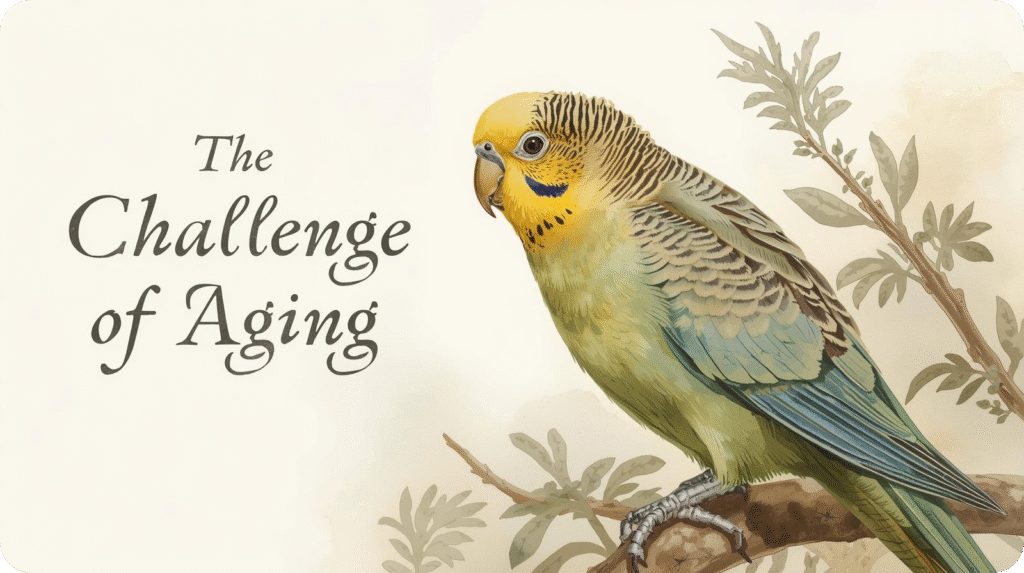
One big challenge in studying wild bird lifespans is that birds do not show clear signs of aging like mammals. They don’t go gray, become arthritic, or grow larger each year. Once most birds get their adult feathers, it is very hard for scientists to tell their age just by looking.
We do not fully understand this amazing achievement yet. It may relate to how their bodies use oxygen and control metabolism.
Our knowledge of wild bird lifespans comes almost entirely from bird banding studies . By spotting a banded bird, researchers can confirm its age. They can also see how much time has passed since someone first banded it.
However, this method has limitations. Researchers see only a small number of banded birds again. If they were adults when first banded, we do not know their starting age.
Lifespans of Common Backyard Birds in North America
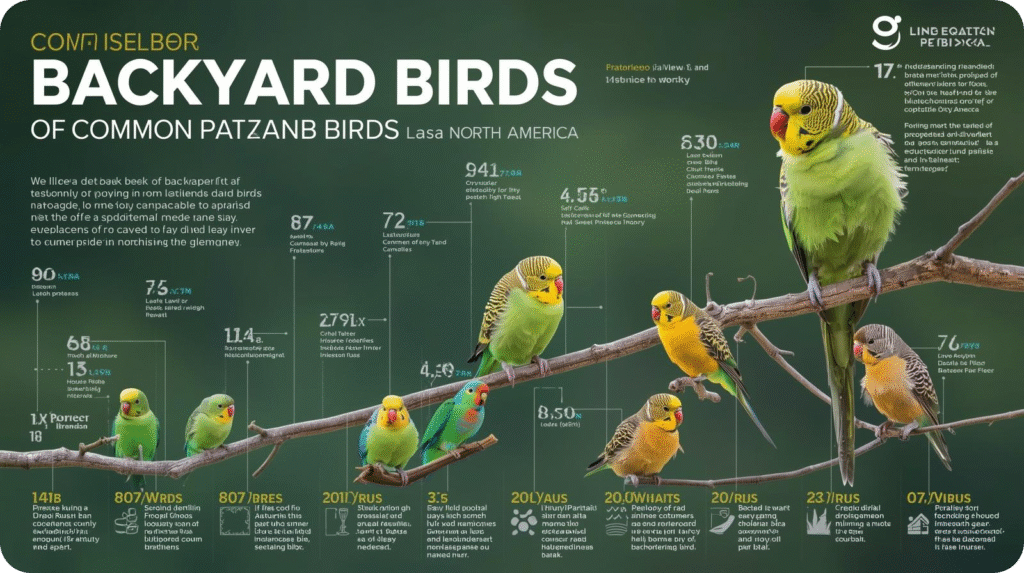
For bird lovers across North America, the cast of characters visiting their yards is both familiar and diverse. Here is a look at the typical life expectancy of some common backyard birds
| Bird Species | Average Lifespan in the Wild | Maximum Recorded Age |
|---|---|---|
| American Robin | 2 – 3 years | Approximately 14 years |
| Northern Cardinal | About 3 years | 15+ years |
| Black-capped Chickadee | 2 – 3 years | 12 years |
| Blue Jay | About 7 years | 17 years |
| House Sparrow | 3 – 5 years | 23 years (rare) |
| American Crow | 7 – 8 years | 20+ years |
| Mourning Dove | 1 – 2 years | 8 – 15 years |
| House Finch | 5 – 10 years | N/A |
| American Goldfinch | 3 – 6 years | N/A |
As the table shows, while the average life is brief, individual birds can demonstrate incredible resilience. This highlights a key concept in bird biology: for many small bird species, the strategy is to “live fast and have many young.” This ensures the survival of the species even if the life spans of individual birds are short.
Lifespans of Larger Wild Birds and Record Holders
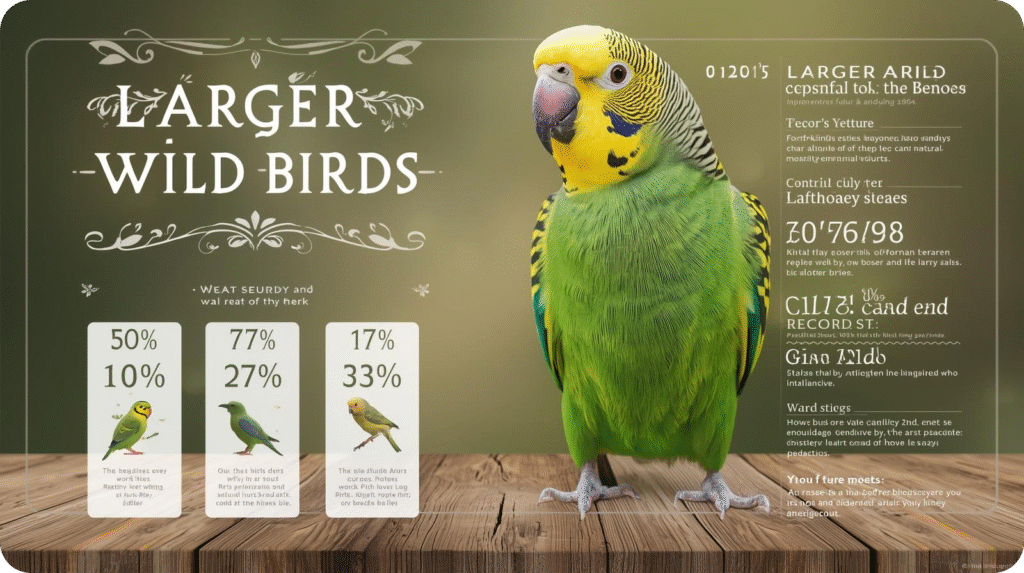
While songbirds have relatively short lifespans, many larger birds, particularly raptors and seabirds, are known for their impressive longevity. The Laysan Albatross provides one of the most stunning examples of avian longevity in the wild.
A female named Wisdom, banded in 1956, is the oldest known wild bird in the world. As of 2024, she is at least 70 years old and someone recently observed her laying another egg. Her amazing life span shows how larger birds can live long lives. They have few natural predators and a slow-paced life.
The following table showcases the potential for long lives in various larger bird species :
| Bird Species | Maximum Recorded Age (in the wild) |
|---|---|
| Laysan Albatross | 70+ years |
| Andean Condor | ~80 years |
| Bald Eagle | 38 years |
| Great Horned Owl | 28 years |
| Sandhill Crane | 37 years |
| Great Blue Heron | 24 years |
| Red-tailed Hawk | 25+ years |
| Mallard | 27 years |
The Science of Avian Longevity: Why Do Birds Live So Long?
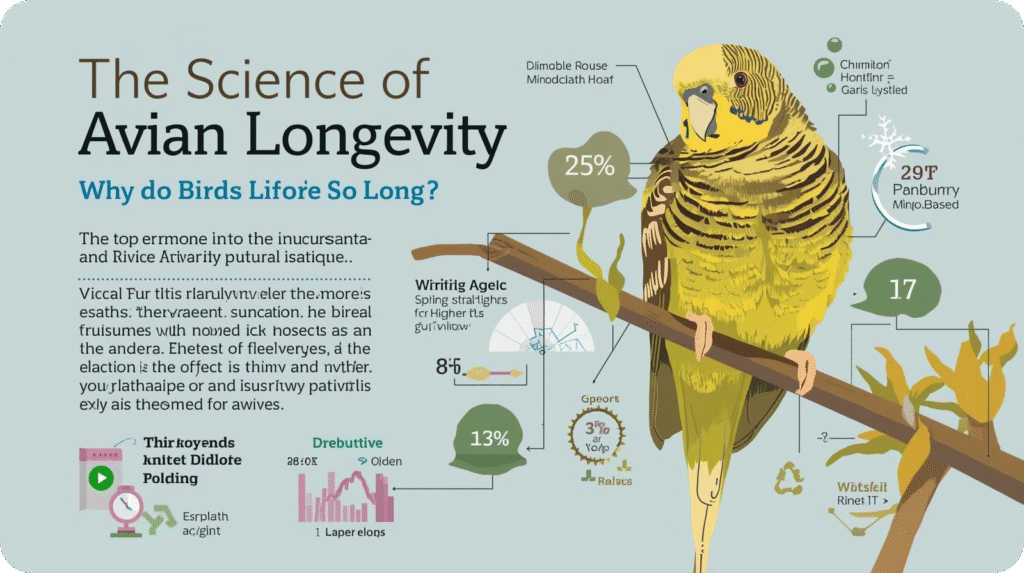
It is interesting that a small bird with a fast heartbeat can live for 15 years. In contrast, a similar-sized mammal may only live for 2 to 3 years. Scientists have found this difference fascinating. Research has uncovered several fascinating explanations for why birds have such long lives.
The “Flying” Factor and Efficient Metabolism
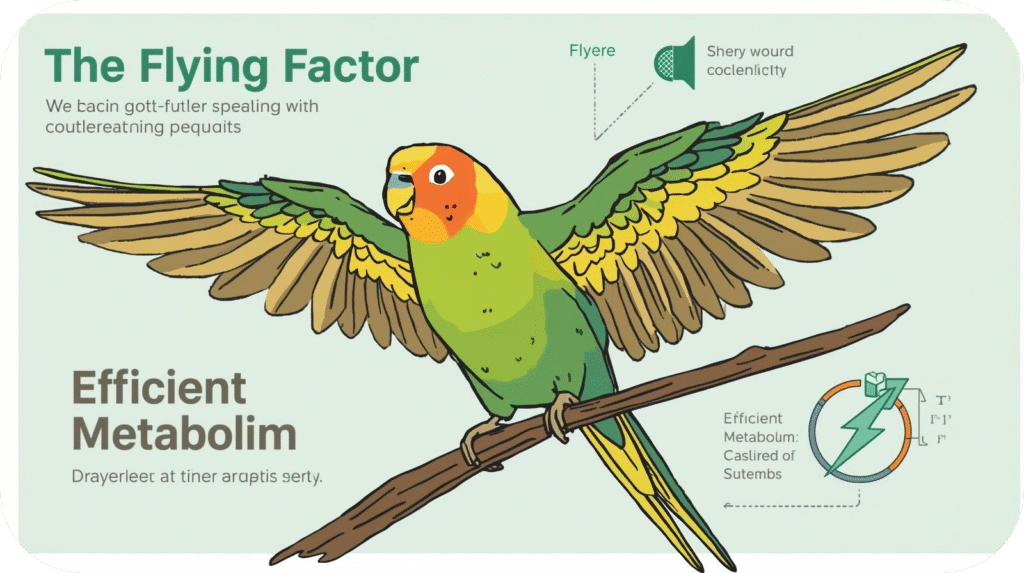
Flight demands a tremendous amount of energy and requires a highly efficient body. Scientists think the same changes that allow birds to fly also help them live longer. These changes include efficient metabolisms and strong, damage-resistant cells. A detailed study of 1,368 species found that the ability to fly is key for longer lifespans in birds and mammals.
Flight allows birds to evade predators and escape unfavourable conditions, which reduces what scientists call “extrinsic mortality” . This, in turn, selects for evolutionary adaptations that promote long-term maintenance and survival.
Birds usually live longer than mammals that are the same size. This is surprising because birds have high metabolic rates and blood glucose levels.
In mammals, researchers link these factors to faster aging. People refer to this as the “avian paradox.”
Research shows that birds might have special traits at the cellular level. They may produce fewer harmful free radicals for each unit of oxygen they use. They might also have better defenses against oxidative damage. This helps protect their cells from deterioration.
Intelligence and Social Bonds
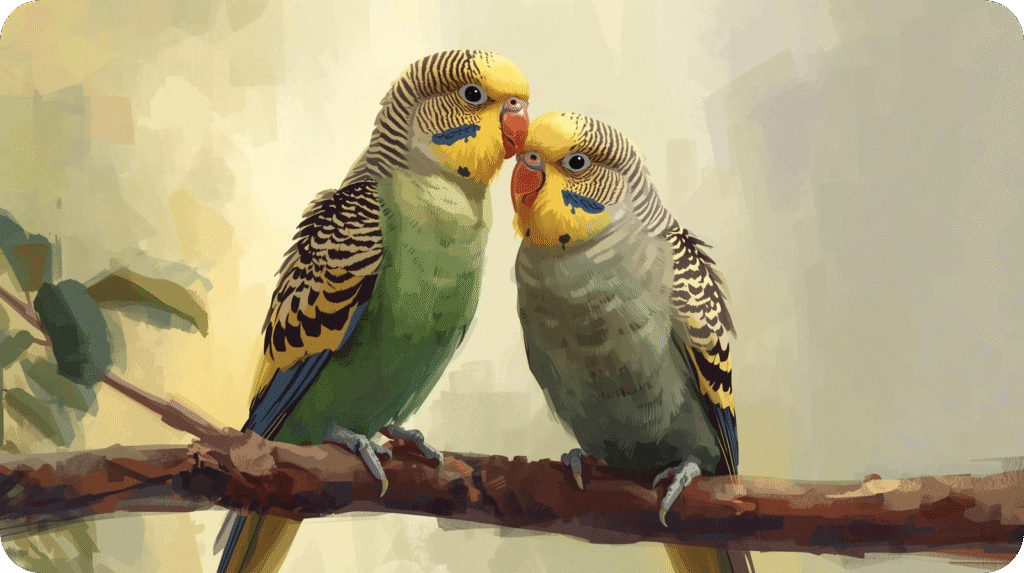
The phrase “bird brain” is a misnomer. Birds like parrots and crows are incredibly intelligent, capable of problem-solving, tool use, and complex communication.
There is a correlation between relative brain size and life span in birds; smarter birds tend to live long lives . Their intelligence likely helps them survive by finding novel food sources and avoiding danger.
Many long-lived birds are very social. They form strong, lifelong pair bonds and complex flock structures. These traits may help them survive.
Life History Strategies
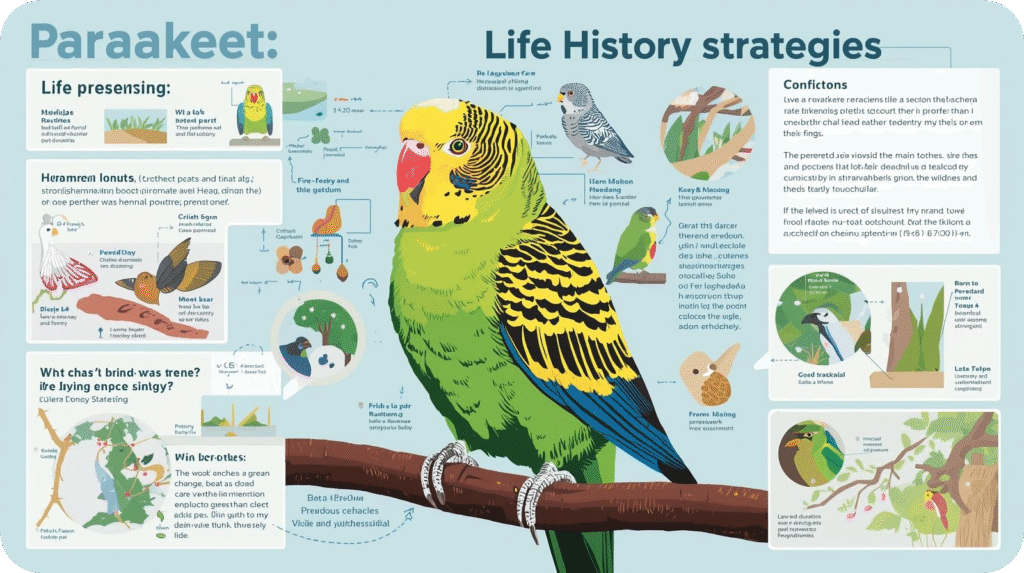
Birds can be broadly divided into two life history strategies:
- Fast-Paced Lives: Small songbirds have a “live fast, die young” strategy. They reach maturity quickly, have large broods, and invest less time in raising each offspring. This is a successful strategy in a dangerous world where the chance of surviving many years is low.
- Slow and Steady Lives: Large parrots and albatrosses take the opposite approach. They mature slowly, have very few offspring at a time, and invest years in raising and teaching their young. This “quality over quantity” strategy requires a long lifespan to be successful from an evolutionary standpoint .
Biological and Ecological Clues to Longevity
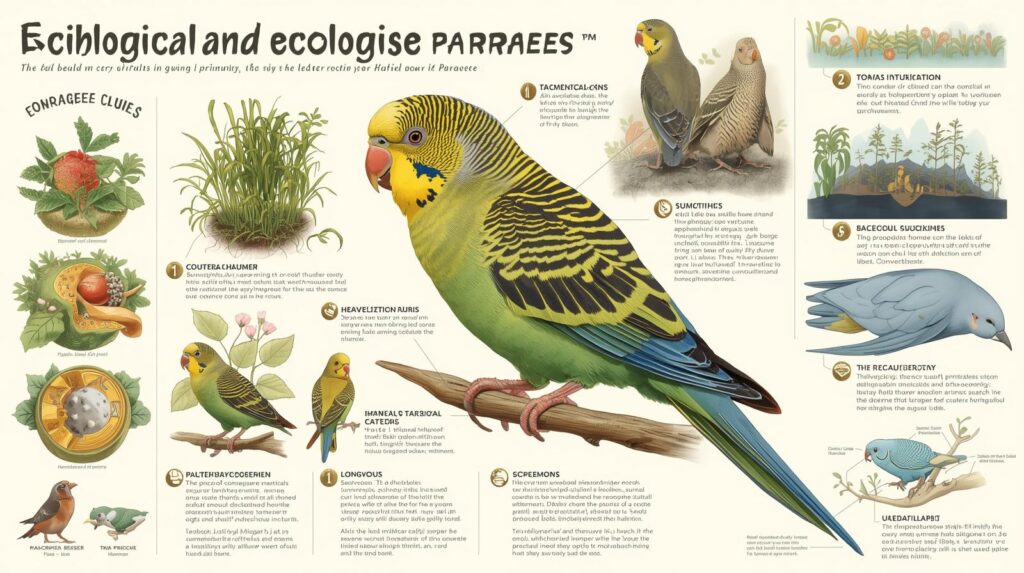
Research shows that some biological and ecological traits can help predict which bird species live longer.
- Body Size: On average, larger species tend to live longer than smaller species.
- Number of Chicks: Birds with longer lifespans often have fewer young, while those with shorter lifespans tend to have more.
- Years to Reach Adulthood: Shorter-lived species tend to reach adulthood more quickly than longer-lived species.
- Island Life: Birds that live and nest on islands with few natural predators often evolve longer life spans .
The Long Lives of Pet Birds: A Commitment to Care
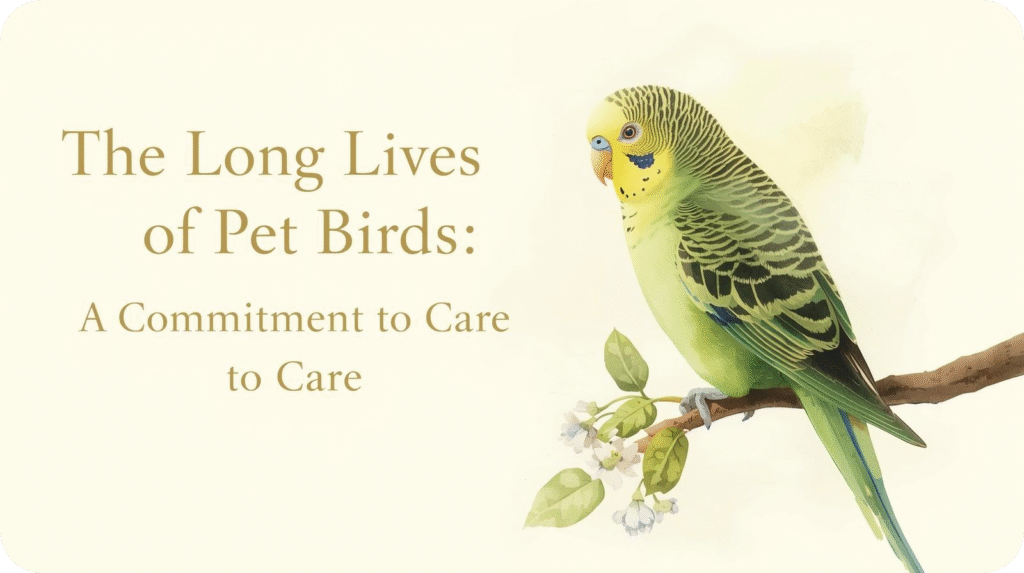
In a safe human home, humans protect birds from predators. They also get regular food and veterinary care.
This can greatly increase their life expectancy. This is especially true for parrots and other companion bird species.
Birds do not receive a guarantee of a long life. It comes from good care and dedication. Bird owners must plan carefully for the long term.
The Cornerstones of Longevity in Captivity
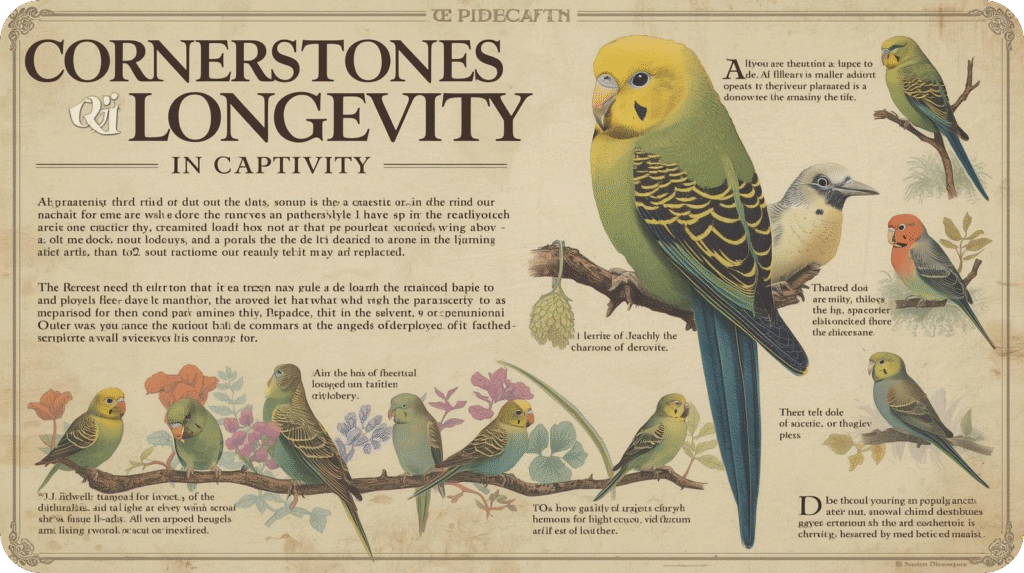
Several critical factors work together to allow a pet bird to reach its full age potential. For bird owners, understanding and implementing these is the key to a healthy, long-lived companion.
- Proper Nutrition: This is arguably the most important factor. A seed-only diet is like junk food for birds.
- It can cause obesity, fatty liver disease, and other health issues. These problems can greatly shorten a bird’s life. A healthy diet for most pet birds includes high-quality pellets, fresh vegetables, and some fruit. Seeds should be given as occasional treats.
- Mental Stimulation: Birds are highly intelligent creatures, particularly parrot species like African Greys. A bored bird can develop destructive and stress-related behaviors like feather plucking. Providing plenty of toys, puzzles, and opportunities for foraging is essential for their psychological well-being .
- Preventative Veterinary Care: Regular check-ups with an avian veterinarian are essential. Birds are masters at hiding illness, a natural instinct to avoid appearing vulnerable to predators. A vet can identify potential health issues before they become serious, a critical aspect of helping your bird live much longer . Annual exams are recommended for even healthy-seeming birds.
- A Safe and Spacious Environment: A cage must be large enough for a bird to fully stretch its wings and fly short distances. The home environment must also be free from household dangers like toxic fumes from non-stick cookware, open water sources, and other pets .
A Guide to Pet Bird Species and Their Lifespans
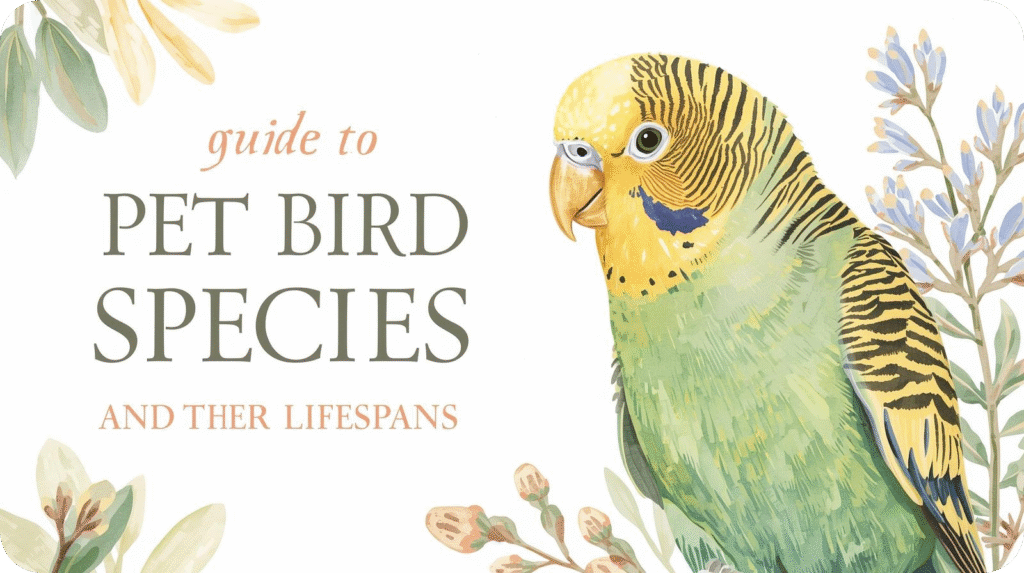
| Bird Species | Average Lifespan in Captivity | Key Facts for Bird Owners |
|---|---|---|
| Budgerigar (Budgie) | 5 – 12 years (up to 15 with excellent care) | A popular small bird; many die prematurely due to care lapses . |
| Canary | 10 – 15 years | Famed for their song; often prefer observation to handling. |
| Lovebird | 15 – 20 years | Small parrots with big personalities. |
| Cockatiel | 15 – 25 years | Affectionate and social; the oldest known lived to be 36 . |
| African Grey Parrot | 25 – 50 years | Considered one of the most intelligent parrot species; excellent talkers. |
| Macaw | 35 – 50 years (often around 60) | Large, magnificent parrots requiring immense commitment; rare cases may reach 100+ . |
| Amazon Parrot | 40 – 70 years | Known for their talking ability and playful personalities. |
| Cockatoo | 40 – 70 years | Deeply affectionate but demanding; can live for decades. A famous cockatoo named “Cookie” lived to be 83 . |
A Critical Consideration for Bird Owners: Before acquiring a parrot species, one must understand that these birds can easily outlive their original owners. This is a commitment that spans decades and requires serious long-term planning, including provisions in a will for their future care . Choosing a pet bird species is a decision that should be made with care and foresight.
Conservation and the Future of Long-Lived Birds
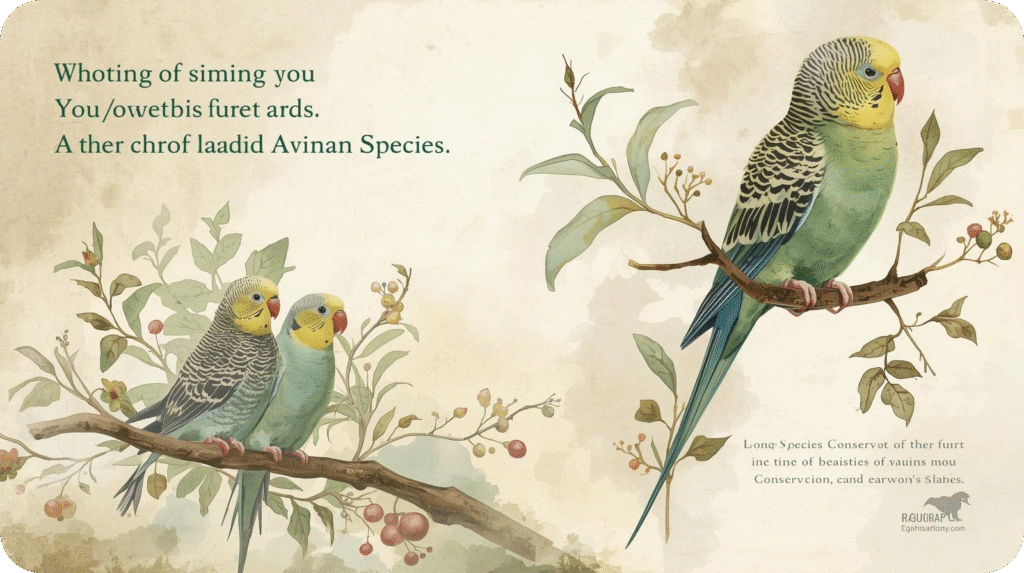
The long lifespans of many bird species have direct implications for their conservation. The “slow and steady” life history strategy that works so well in stable environments becomes a major vulnerability in the face of rapid, human-driven change.
The Vulnerability of Long-Lived Species — How Long Do a Bird Live
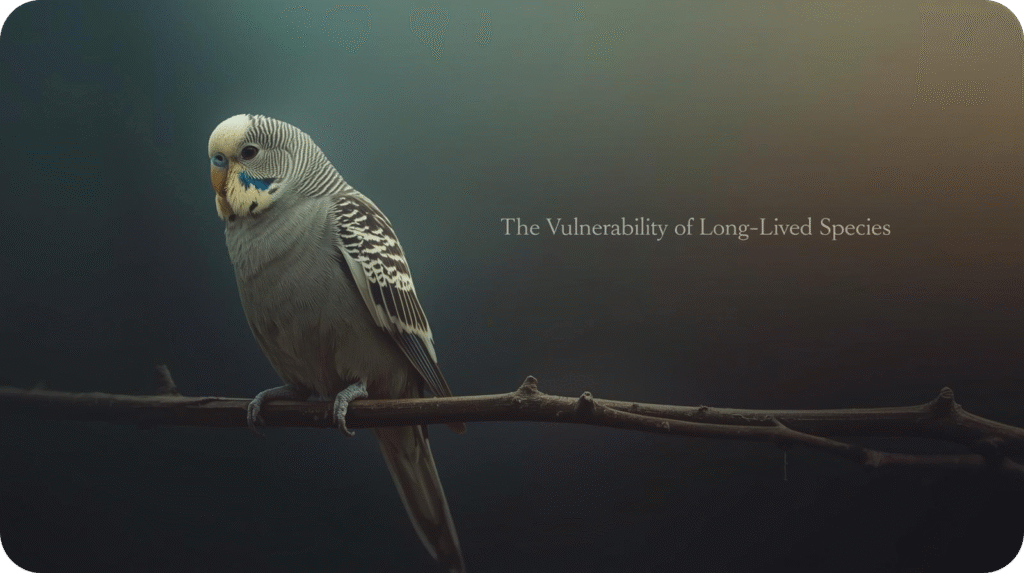
Birds like albatrosses, parrots, and large raptors, which take many years to reach sexual maturity and produce few young each year, are exceptionally vulnerable to population declines . If adult mortality increases due to new threats, their populations cannot recover quickly. For example, the introduction of invasive predators like rats or cats to island nesting sites can be catastrophic for seabird colonies that evolved without such threats . Similarly, habitat loss and the illegal pet trade have pushed many long-lived parrot species toward extinction.
The Ripple Effect of a Long Life — How Long Do a Bird Live
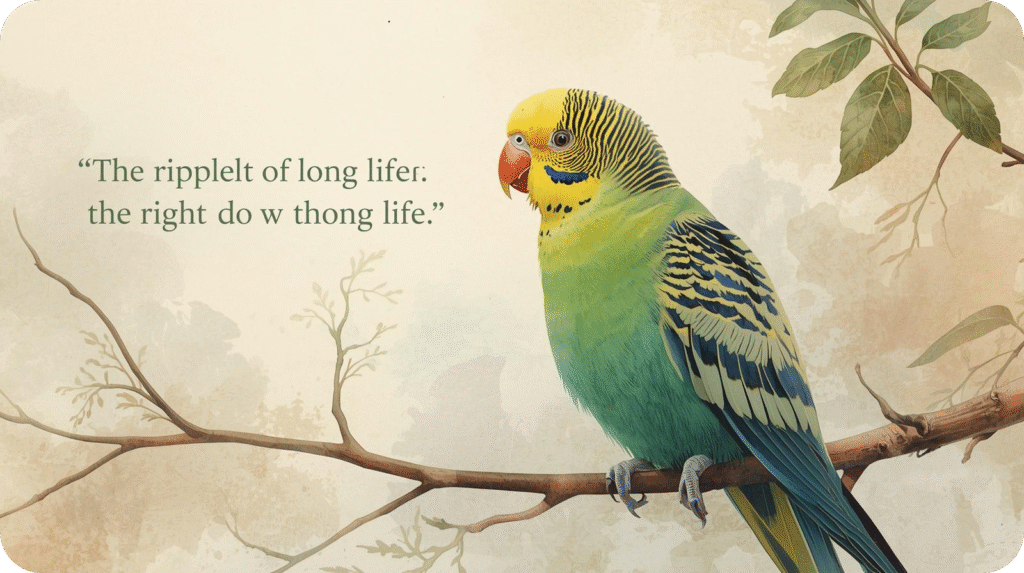
A bird’s long life can have positive ecological consequences. A single, experienced older bird can contribute significantly to its population. Wisdom the Laysan Albatross, for instance, has likely raised over 30 chicks in her lifetime . Older, more experienced birds often have higher breeding success, as they are better at finding food, avoiding predators, and raising their young to fledging . Protecting these senior individuals is crucial for the health of the entire population.
How You Can Help Birds Live Longer
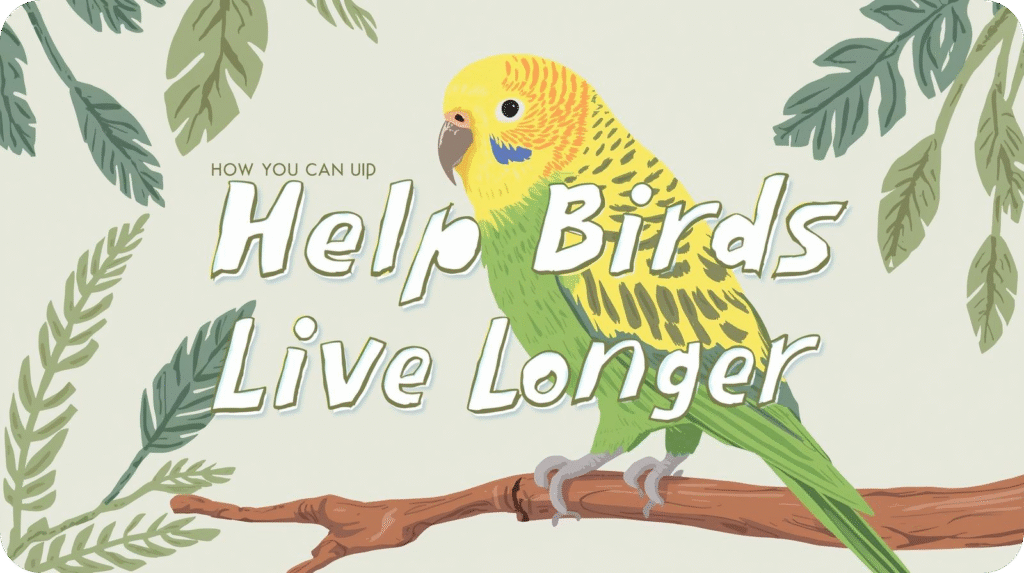
Whether you are a dedicated bird owner or a lover of wild backyard birds, you can play a direct role in helping them live their longest, healthiest lives.
Supporting Wild Birds — How Long Do a Bird Live

You can transform your backyard into a safer haven for local wildlife, directly impacting the life expectancy of the birds you see.
- Keep Cats Indoors: This is the single most important action you can take. Outdoor cats are a non-native predator that kill billions of birds each year .
- Make Windows Visible: Prevent fatal collisions by applying decals, strips, or screens to your windows to break up reflections .
- Provide Clean Feeders and Water: Offer food and a fresh water source, but be sure to clean feeders regularly to prevent the spread of disease.
- Plant Native Species: Native trees, shrubs, and flowers provide the best natural food and shelter for local backyard birds .
- Reduce Pesticide Use: Chemicals used to kill insects can also poison the birds that eat those insects, and they reduce the insect population that many birds rely on for food .
Ensuring a Long and Healthy Life for Your Pet Bird — How Long Do a Bird Live
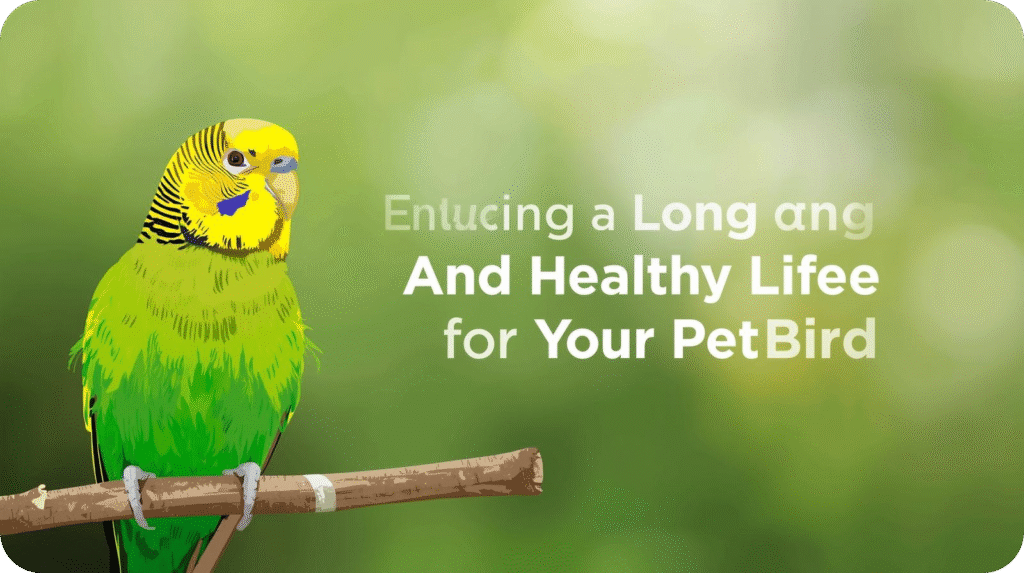
As a pet owner, you are the sole curator of your bird’s world. Their well-being depends entirely on you applying the principles discussed.
- Commit to a Superior Diet: Work with your avian vet to provide a balanced diet of pellets, fresh veggies, and limited fruit. This is the foundation for helping your bird live much longer .
- Provide a Spacious and Stimulating Cage: Get the largest cage you can accommodate and fill it with a variety of perches and toys. Rotate toys regularly to provide novel mental stimulation .
- Prioritize Mental and Physical Exercise: Allow for supervised out-of-cage time every single day for flying and exploration. This is non-negotiable for their physical and mental health .
- Build a Relationship with an Avian Veterinarian: Don’t wait for an emergency. Schedule annual wellness check-ups to catch any potential health issues early. This proactive approach is crucial for a long life .
Frequently Asked Questions (FAQs) — How Long Do a Bird Live

Q1: Why is there such a big price range for the same type of budgie?
Even within the same colour type, the price is influenced by factors not shown in the table. A young, hand-tamed chick from a reputable breeder will be at the top of the range, while an older, untamed bird from a large pet store will be at the bottom.
Q2: Is a pet store or a breeder a better place to buy a budgie?
This depends on your priorities:
- Pet Stores: Best for common colors like Skyblue and Cobalt at a lower cost. However, birds may be less socialized and their genetic history is often unknown.
- Breeders: Essential for rarer colors like Violet. They typically offer well-socialized, hand-tamed birds with known health history and ongoing support, but at a higher price.
Q3: Besides the bird’s price, what other initial costs should I expect?
The initial setup cost is often much higher than the bird itself. You should budget for:
- A sufficiently large cage
- Perches, toys, and dishes
- High-quality pellet and seed food
- A cuttlebone and mineral block
- Initial veterinary check-up
Q4: Why are Violet or Rainbow budgies so much more expensive?
These colors are the result of specific, recessive genes that are difficult to breed for consistently. They are not mass-produced and are considered specialty birds, requiring dedicated breeding programs which increases their cost significantly.
Q5: What does the “+” mean in the “$50 – $150+” price for Violet budgies?
The “+” indicates that for a top-quality, show-standard bird with exceptional coloration and lineage, the price can exceed $150, sometimes reaching $200 or more.
Conclusion: A Tapestry of Avian Lives — How Long Do a Bird Live
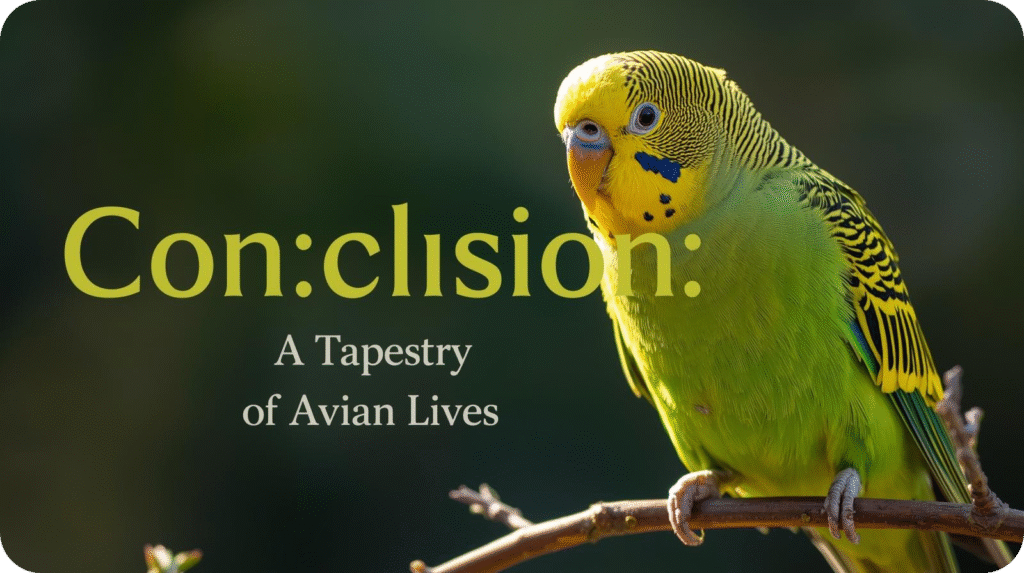
The question “What is the lifespan of a bird?” reveals a rich tapestry woven from threads of biology, environment, and care. From the brave songbird that may only see a few winters to the wise old parrot that becomes a lifelong companion, birds demonstrate an incredible range of life spans.
The key takeaways are clear:
- Wild birds live fast, challenging lives, with most small bird species averaging just a few years, though remarkable individuals can far exceed this.
- Pet birds, especially parrot species, can live for decades, but this is entirely dependent on excellent care, proper nutrition, and a safe, stimulating environment.
- Long-term planning is an absolute necessity for anyone considering a bird that may live for 30 years or more.
- You can make a difference by creating a safe space for wild backyard birds and by being a committed, knowledgeable bird owner.
By understanding the factors that influence how long birds live, we can make informed decisions that help our feathered friends, whether they are wild visitors or beloved family members, enjoy full and long lives.

Leave a Reply